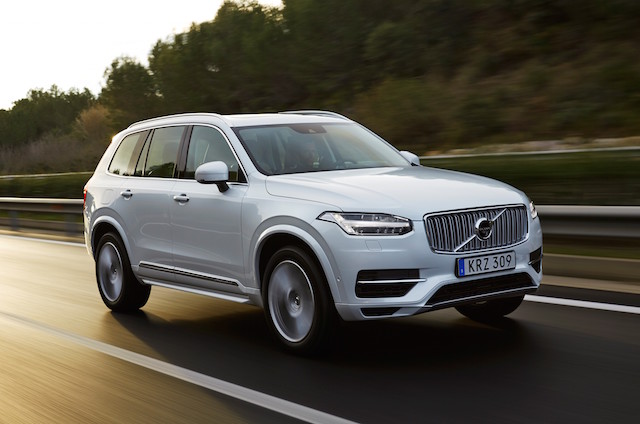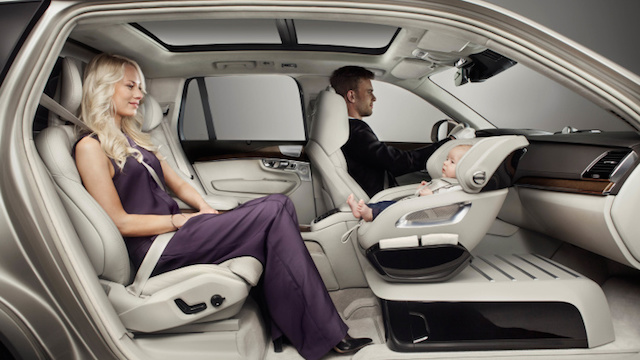
Child safety advocates have been saying for years that children under four years of age have a better chance of surviving a car accident if they travel in rearward-facing child seats.
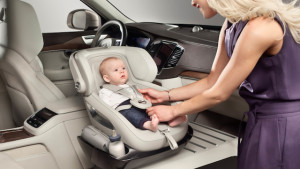 Now Volvo has taken the recommendation a step further with what it calls the ‘excellence child seat.’ It comes 25 years after the Swedish carmaker introduced the booster seat for kids, allowing the three-point safety belt to be used to best effect.
Now Volvo has taken the recommendation a step further with what it calls the ‘excellence child seat.’ It comes 25 years after the Swedish carmaker introduced the booster seat for kids, allowing the three-point safety belt to be used to best effect.
The excellence seat is a concept, so the arrangement isn’t available in the new Volvo XC90, the carmaker’s premium SUV that goes on sale in New Zealand this week. But Volvo has used the CX90 to illustrate how it would work.
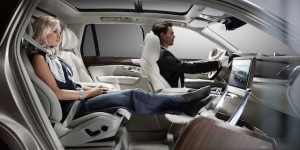 The child seat is a further development of the XC90 Excellence and Lounge Console Concept, a design exercise that turned one side of the car into a workplace or leisure area as shown in the pictures on this page.
The child seat is a further development of the XC90 Excellence and Lounge Console Concept, a design exercise that turned one side of the car into a workplace or leisure area as shown in the pictures on this page.
Volvo interior design chief Tisha Johnson said the idea for the child seat came after Li Shufu, the billionaire owner of the Chinese holding company which owns Volvo Cars, reviewed the lounge console concept.
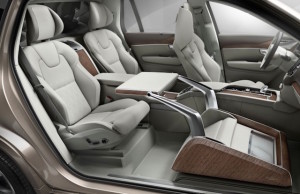 “We started by asking ourselves if we could make life easier for parents and safer for their children when it comes to the child seat experience,” said Johnson.
“We started by asking ourselves if we could make life easier for parents and safer for their children when it comes to the child seat experience,” said Johnson.
“We focused on three key benefits – making it easier to get the child into and out of the child seat from an ergonomic and comfort perspective, providing the child with a safe rearward facing seating position that enables it to keep eye-contact with either the driver or the rear passenger and of course including enough storage for those vital child accessories, such as diapers, bottles, wipes, and so on.”

Johnson said alternative seating arrangements such as those pictured here will become increasingly important as the world moved towards autonomous vehicles.
“We have been investigating the nature of progressive luxury for some time and we see a direct connection between luxury and emotional wellbeing,” she said.
“So we have taken the next step in redefining how the interior of a car can be used to suit our customers’ needs. We have always placed a great deal of importance on child safety, but this takes things to the next level.”
Volvo is launching seven versions of the all-wheel-drive XC90 in NZ this week, badged Momentum, Inscription and R-Design. Momentum is the one-only entry-level model; Inscription comes with more goodies; R-Design gets even more goodies.
There are three engines, all of 2.0-litre four-cylinder capacity with forced induction and mated to an eight-speed gearbox. Each engine is rated Euro6.
The D5 AWD is available with Momentum ($97,900), Inscription ($104,900) and R-Design ($106,900) badges. Under the bonnet is a twin-turbocharged diesel delivering 165kW at 4250rpm and 470Nm between 1750-2500 and claimed fuel use of 5.8 litres/100km for a C02 output of 152gr/km. Fuel tank is 71 litres; braked towing 2700kg.
The T6 AWD (Inscription ($110,900) and R-Design ($112,900) runs a 2.0-litre petrol unit boosted by a supercharger and turbocharger to deliver 236kW at 5600rpm and 400Nm between 2200-4500rpm. Volvo claims fuel use of 8 litres/100km for C02 of 179gr/km. Fuel tank is 71 litres; braked towing 2700kg.
The T8 Twin Engine AWD (Inscription ($134,900) and R-Design ($136,900) is the XC90 flagship, a hybrid running pretty much the same 236kW T6 unit but aided by an electric motor producing 65kW. Volvo reckons the T8 is good for town-and-around fuel use of 2.1 litres/100km, or 135mpg. C02 output is a clear class-leading 49gr/km. Fuel tank is 50 litres; braked towing 2400kg.
